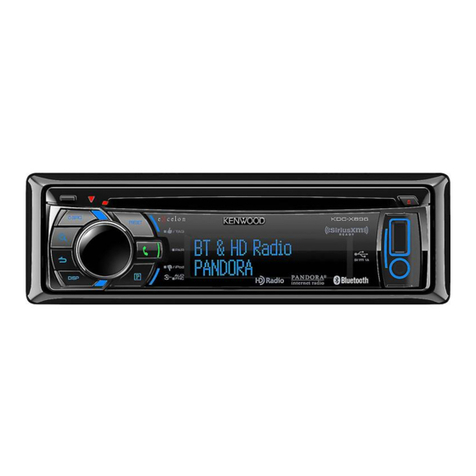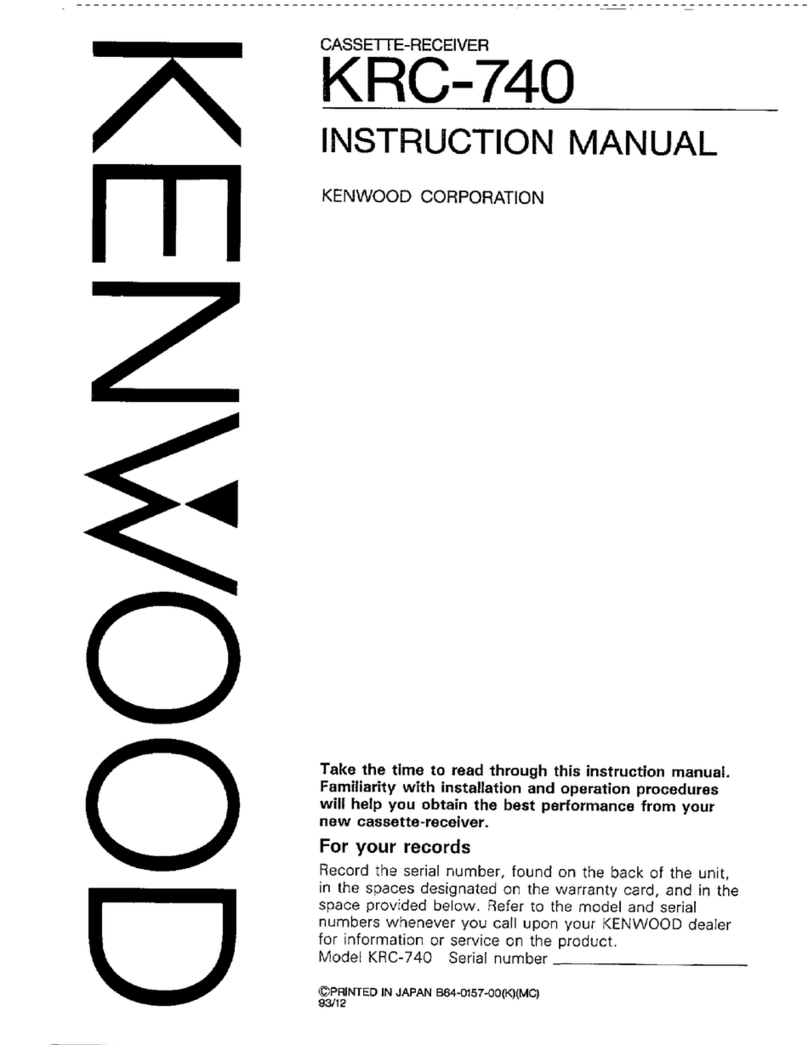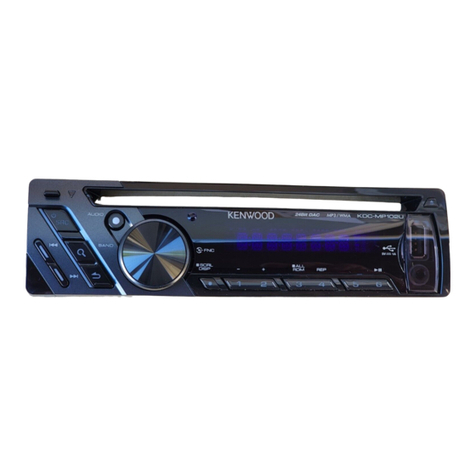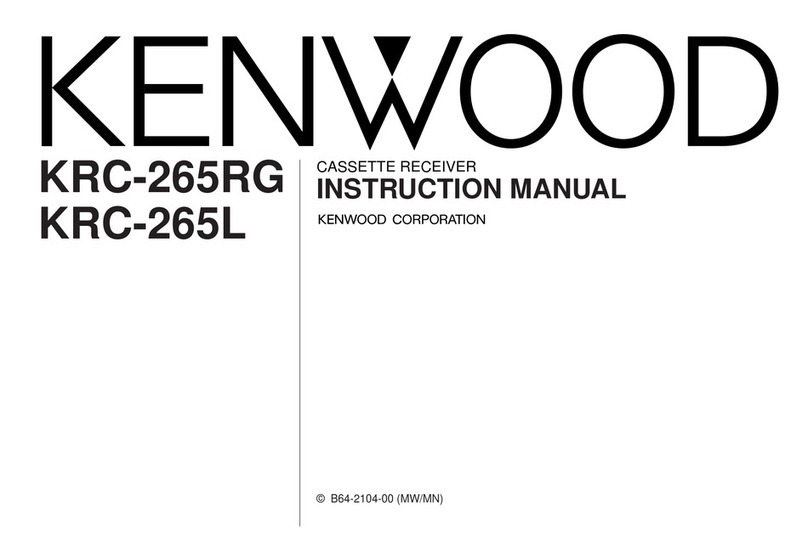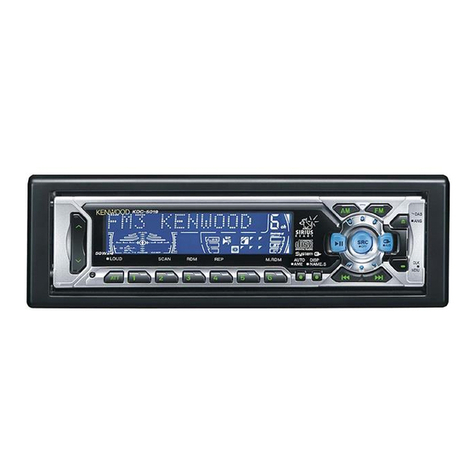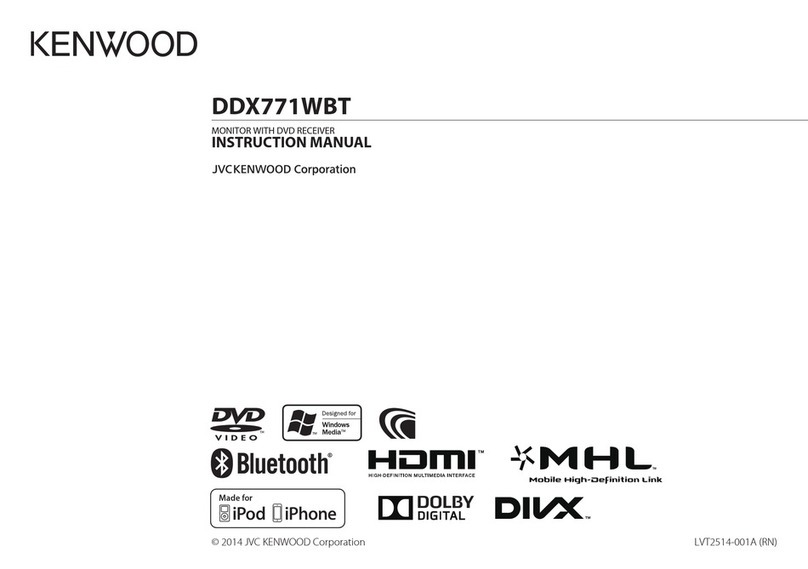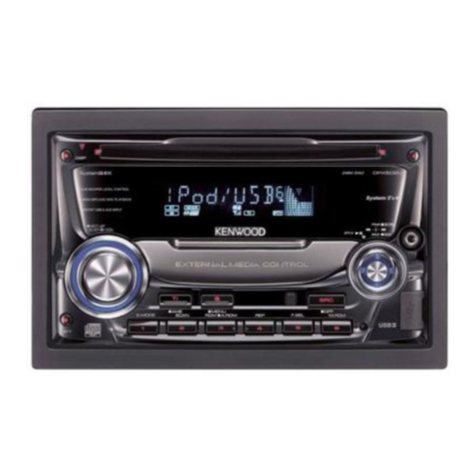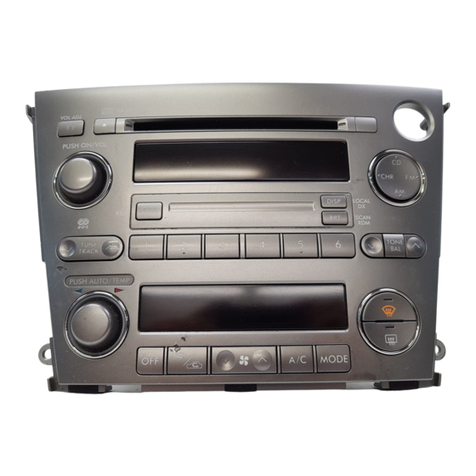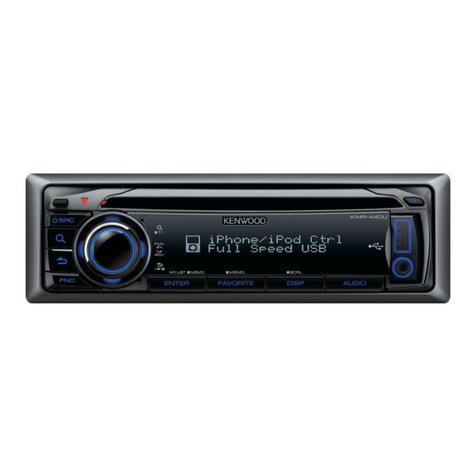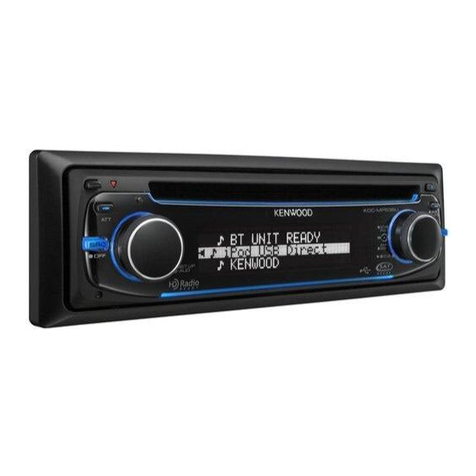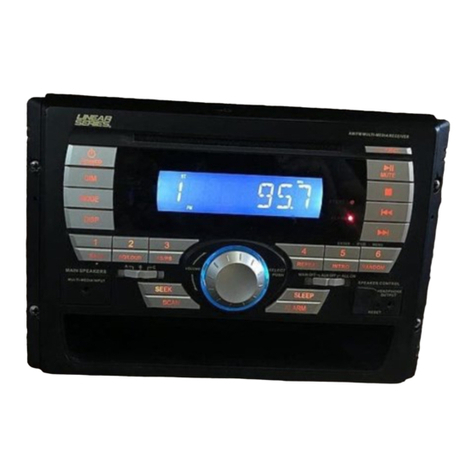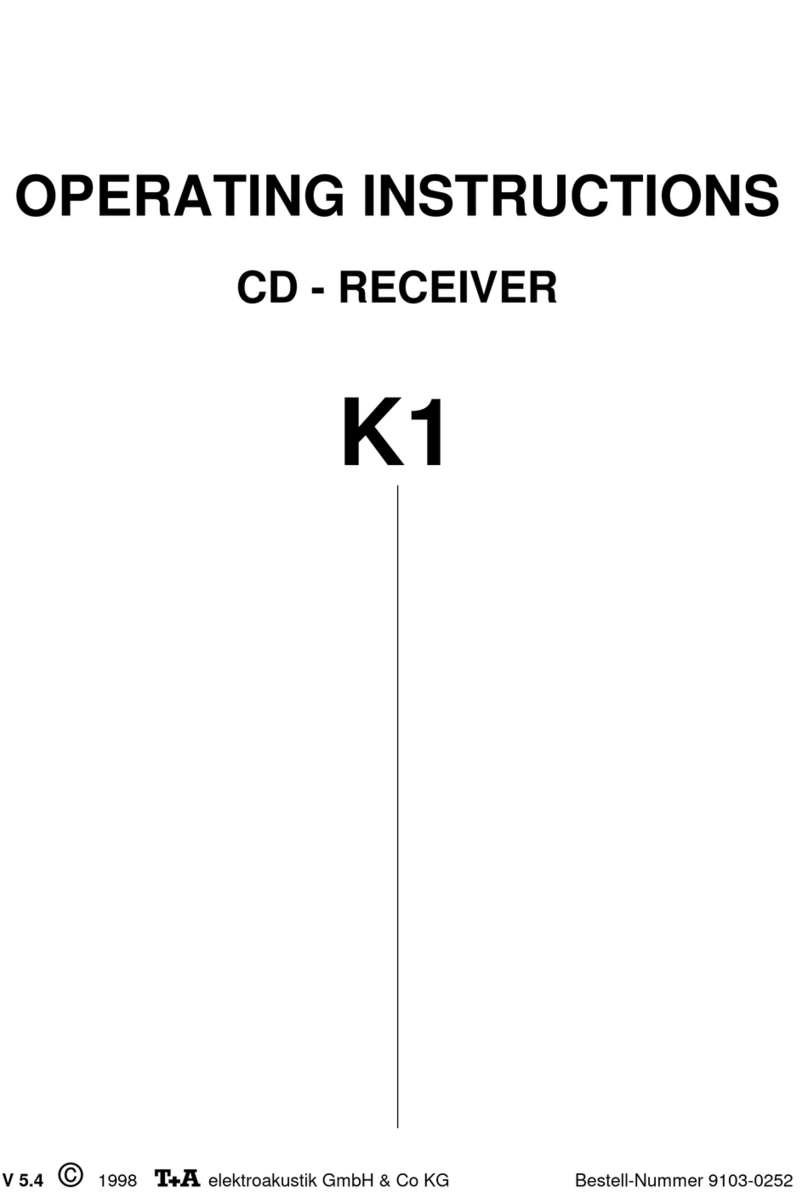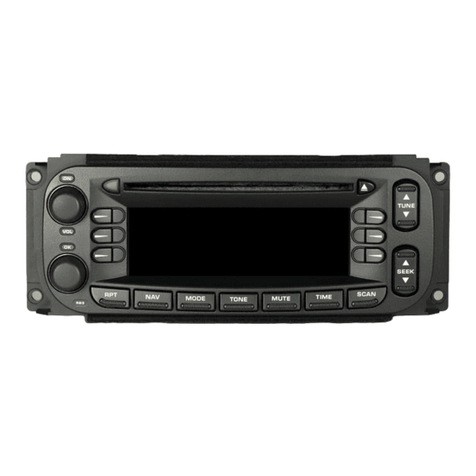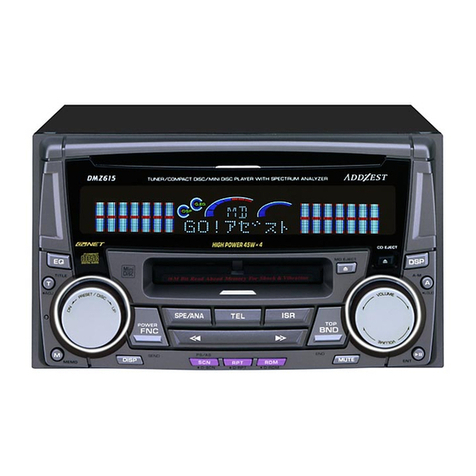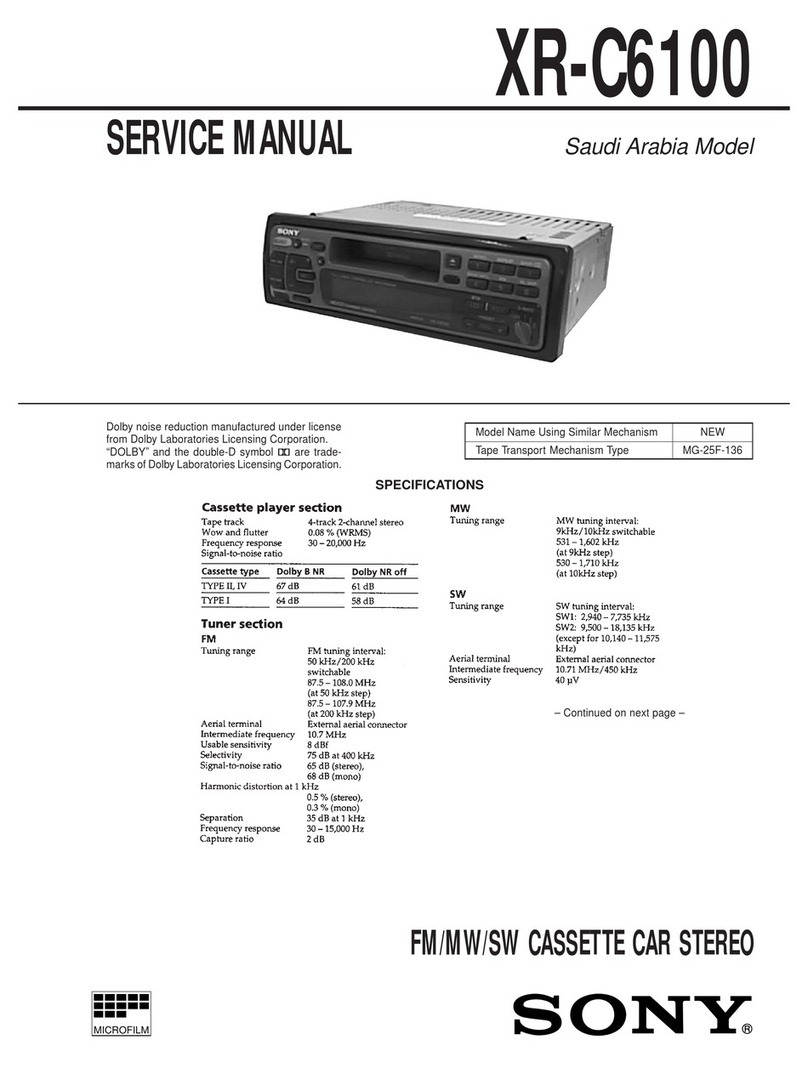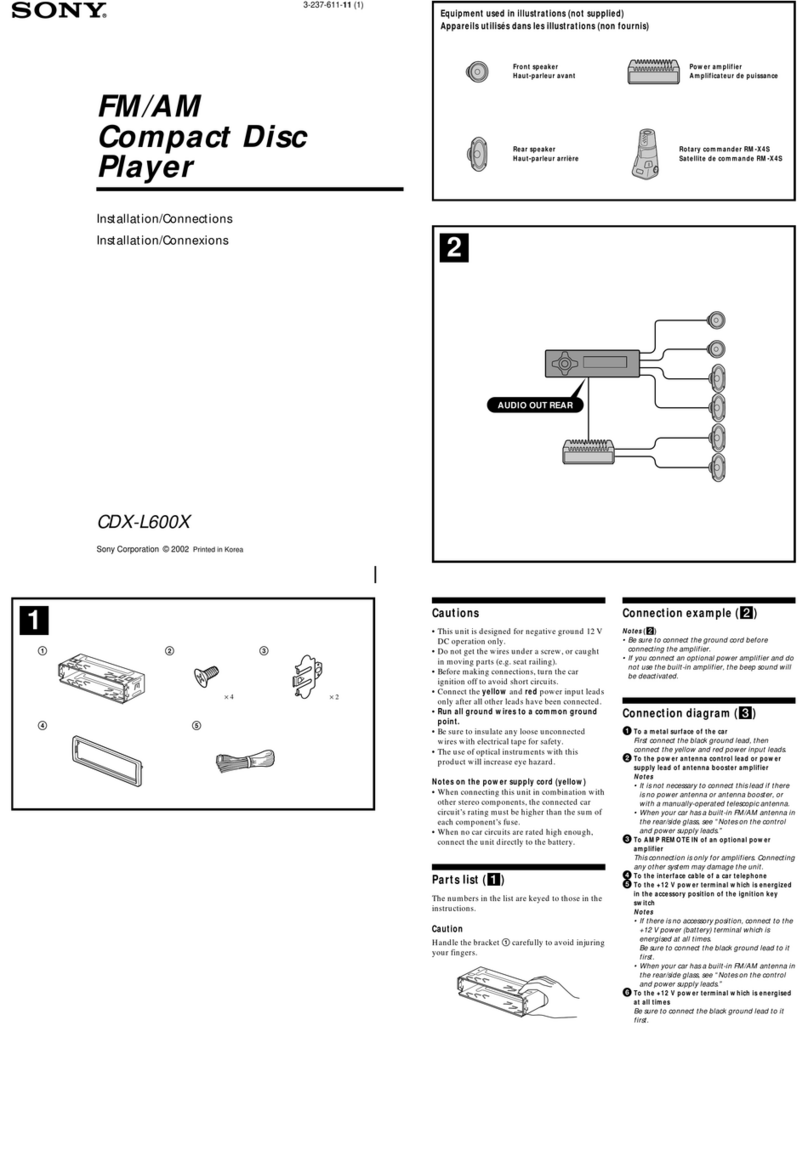
KDC-W6531/W6531Y
/X589/X7529
5
COMPONENTS DESCRIPTION
MICROCOMPUTER’STERMINAL DESCRIPTION
●MECHANISM MICROCOMPUTER 91CU27UG5UR8 (X32-573 : IC1)
Pin No. Pin Name I/O Application Processing Operation Description
1VREFL I ADC reference power supply input terminal (L) GND
2DMUTE O Driver MUTE L : STOP, H :MUTE OFF
3CSRST O (Decoder) Resetting control L : RESET, H : NORMAL
4NCONot used. Open output L-fixed
5LZM I 0bit MUTE detection (Lch) L : MUTE OFF, H : MUTE ON
6RZM I 0bit MUTE detection (Rch) L : MUTE OFF, H : MUTE ON
7BREQ I (Decoder) BREQ signal input
8DSPINT I (DSP) interruption signal input H : Interruption
9SREQ O (Decoder) SREQ signal output
Ref. No. Application / Function Operation / Condition / Compatibility
Q4,906 SW14V When Q4’base goes Hi, SW14V outputs 14V.
Q5,6 AUDIO8V AVR When Q6’base goes Hi, A8V AVR outputs 8.3V.
Q7,8 MOTOR+B AVR When Q8’base goes Hi, M+B AVR outputs 8.3V.
Q9,10 SERVO+B AVR When Q10’base goes Hi, S+B AVR outputs 7.7V.
Q12 SW for IC12 When Q12’base goes Lo, IC12 is turned on.
Q13 PAN5V When Q13’base goes Lo, PAN5V outputs 5V.
Q14 4V PRE+B Short Protection If Q15’Emitter short to GND, between Q14’Base to Emitter
more than 0.6V, Q14 ON and Q15 is turned off.
Q15,16 4V PRE+B When Q15’base goes Hi, 4V PRE+B outputs 12V.
Q17,18 ILL+B SW When Q17’base goes Hi, ILL+B SW outputs 10.65V.
Q101,102 P-ANT SW When Q102’base goes Hi, P-ANT SW outputs 14V.
Q103,106 P-CON SW When Q106’base goes Hi, P-CON SW outputs 14V.
Protects Q104 from being triggered erroneously.This is
Q104,105 P-CON Protection achieved by turning on output protection when P-CON output
grounding is detected.
Q107 Ext Amp Control Buffer
Q108 Small lamp det SW When Q108’base goes Hi, Q108 is turned on.
Q109,110 Surge det When Q109’base goes Hi, Q109, Q110 are turned on.
Q111 BU det When Q111’base goes Hi, Q111 is turned on.
Q112 ACC det When Q112’base goes Hi, Q112 is turned on.
Q113 Mute driver When Q113’base goes Lo, mute driver is turned on.
Q114 Mute driver When Q114’base goes Lo, mute driver is turned on.
Q115,116 Mute driver When a base goes Lo, mute driver is turned on.
Q300,301 AM+B SW When Q301’base goes Hi, AM+B is out.
Q304 DSI (Disabled System Indicator) DSI blinks when Q304’base goes “H/L”
Q400~405 Pre-out mute SW When a base goes Hi, Pre-out is muted.
Q905 SVR+B AVR When Q905’base goes Hi, SVR+B AVR outputs 14V.


